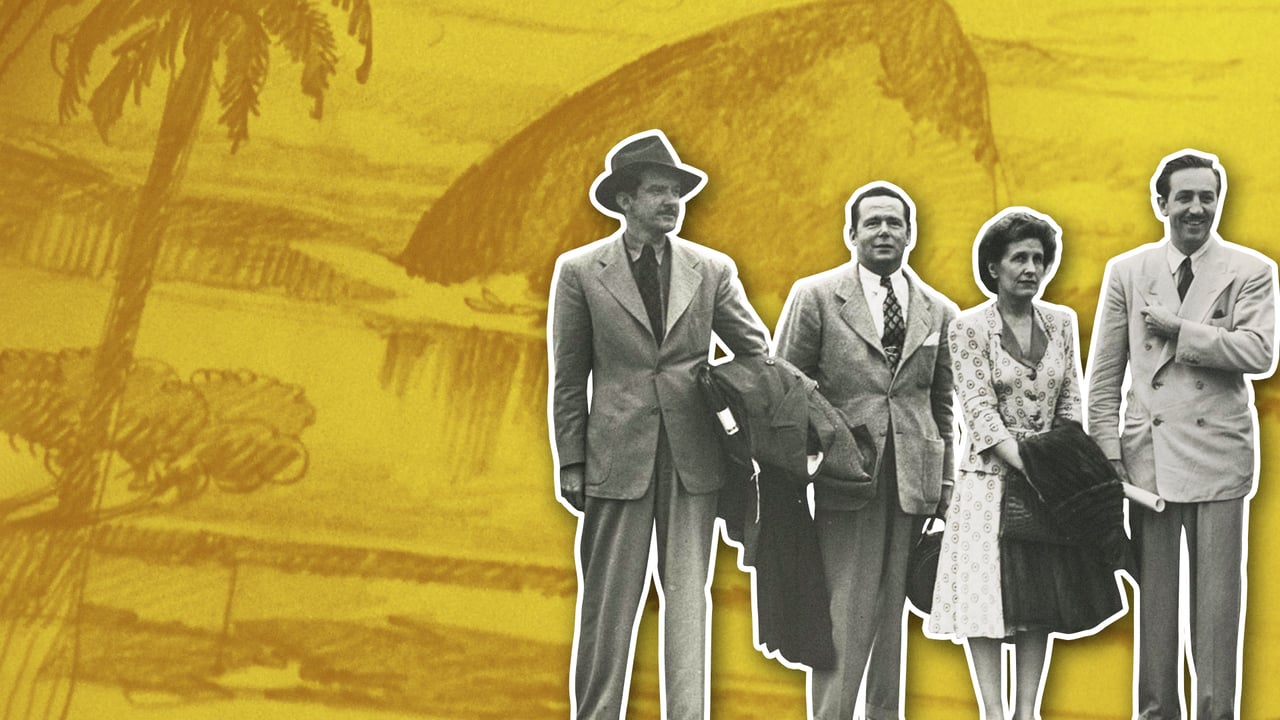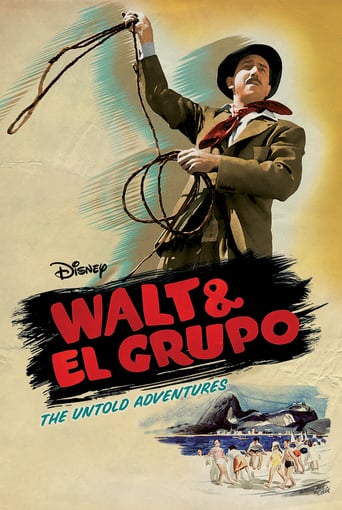

Self-important, over-dramatic, uninspired.
... View MoreDon't listen to the Hype. It's awful
... View MoreFanciful, disturbing, and wildly original, it announces the arrival of a fresh, bold voice in American cinema.
... View MoreExactly the movie you think it is, but not the movie you want it to be.
... View MoreEXPLOITATION IS ONE of those perfectly good, useful and innocently crafted words that is shackled with a great disparity between its denotative and connotative meanings. Simply stated, it means making good use of circumstances, surroundings and any resources available to achieve an end; that being the denotative. The implication of unfairly exploiting any persons, things or situations or situations for an unfairly gained result is the connotative side of the ledger.THE HISTORICAL EPISODE of Mr. Disney and Company's being asked by the Federal Government during the 3rd term of the Roosevelt Administration to embark on a Good Will tour of South America is a fine example of exploitation at its best. It also brings us a fine example of a sort of double edged sword version of the concept of exploiting opportunity. In this case, there is no doubt that both the US and the Disney Company both benefited in totally unexpected levels of success.THE PROBLEM FACING the USA and the Republics of Latin America was the widespread appeal of German-style Fascism in the Western Hemisphere. The various nations, who struggling socially and economically to achieve a higher level of success found many of both their leaders as well as their citizenry among them, who were willing to emulate what had been going on in Nazi Germany, Fascist Italy and Imperial Japan. Much in the same manner as so many of Depression Era people of the United States viewed Marxism and various other Socialisms as being an answer to economic woes, so did the South American see fascism.THE STORY STARTS out with Disney in a proverbial "behind the Eight Ball" situation; as his plans to do two Animated Features in one year are endangered by the economic realities of the late 1930's. The fate of both PINOCHIO and FANTASIA were put on hold as labor problems also engulfed the Disney Organization. Then along came this State Department sponsored multi-nation tour. With US dollar$ underwriting both the trip, as well as the eventual productions to come out of this sojourn, things couldn't have been better.IN THE FILM, which was crafted from so many other film sources, the traveling caravan of Disney's artists, writers, musicians and technicians were shown in their visit to so many locales in the Continent of South America and the outstanding reception that they received. In the choice of where to visit, the individuality of the many varied nations was both recognized and established as a reciprocal fact of the relationship of the Americas.SO FAR AS it is, so good for the US Department of State and the Roosevelt Administration's efforts and purposes; but what about Disney's goals? AS IS SO beautifully told in the film, "el Grupo" hit the ground with its collective feet running and did not stop. In every locale, music, painting, sculpture, folk dance and the traditional native costuming were the featured items of the day. Walt led the company in a total immersion of the cultures of each people and nation. The best of the artists in each field were called upon for their input and ultimate participation.THERE WAS SUCH extensive filming and carefully recorded written histories of the various stops along the way as to be the foundation for some of the finest animation that would be done by the studio. Indeed, the filmed record produced was not only the great animated sequences, but also of the breathtakingly beautiful terrain, forests, plains and waterways. All of this had the most pleasing and artistically successfully music ever put to a soundtrack.AS A RESULT OF this whole expedition, the World would receive two animated features. SALUDOS AMIGOS and THE THREE CABALLEROS were the films that emerged. Both were highly successful at the old Box Office and had high critical acclaim. (Well Schultz, that means that both the public as well as the critics liked them!) LITTLE DOES THE current population of Americans realize how much Mickey Mouse and the guy behind him were responsible for preserving the Free World. And could we ever use him again today!
... View MoreWonderfully entertaining documentary from writer-director Theodore Thomas, working alongside the Walt Disney Studios Motion Pictures distribution arm, chronicles a turbulent time in Mr. Disney's life: the years 1940 and 1941, when an animators strike and the looming threat of a dominant union threatened to tear the Disney Company apart. With the war in Europe putting a financial damper on Disney's output overseas, "Pinocchio" and "Fantasia" fell into the red, causing Walt to owe the bank four million dollars. An invitation, then, from President Roosevelt for Disney and his hand-picked team to make a good will tour of South America came as a godsend, although Disney was initially reluctant to travel through Latin America "just shaking hands". He turned the trip to his advantage, however, and released two pictures dedicated to the culture of our neighbors and their people, "Saludos Amigos" in 1942 and "The Three Caballeros" in 1944. Looking back, the movies, though certainly entertaining, were just a stop-gap while Disney came up with bigger ideas, but the underlying notion here--that Walt felt utterly betrayed by his employees--lends this documentary a tough emotional core. Walt also lost his father during the trip, and one senses the emotional weight on him as he is photographed on boats and emerging from planes, waving at the crowds. This is a beautifully-produced sentimental journey, wherein still shots come to life and (now-aged) witnesses and relatives recount this fascinating chapter in Disney history. *** from ****
... View MoreLike many documentaries, the documentary seemed to lack a specific point. It comes across as interesting as watching someone's home movies. It talks about the various staff who travelled with Walt Disney to South America and people who they met with. But it's just an info-dump with no real focus as to any goal. There's some mention as to why Disney travelled there and how some of the materials gathered were used in Disney films, but it would have been better if the documentary had shown more of the connection with how specific material had been used in the films.There was also no mention of the Tiki Bar Lounge in Disneyland, however after seeing the documentary it's obvious that it must have contributed to it's creation.
... View MoreWalt Disney's sojourn in South America on behalf of the Roosevelt Administration's "Good Neighbor Policy" would make for an interesting film, but this isn't it. The film is not so much a documentary as a dry recitation of the itineraries of the people involved, often read by surviving family members, with little or no perspective into what the trip meant (save for allowing legendary design artist Mary Blair to blossom professionally) and what it ultimately accomplished. Some of the footage is interesting, but rarely does any of it contain the energy of the poster image of Walt swinging a lasso. While Disney's appearance in S.A. was no question big news down there, the film implies that it was also unique. Other Hollywood figures--notably Orson Welles--were also sent down south by FDR (and in Welles' case the almost-result was the unfinished "It's All True"), while other South American performers were invited up to Hollywood. Perhaps most telling is the subtext that runs throughout the film, blaming the 1941 strike at the Disney studio, which forced it to unionize, as the factor that killed both the studio's spirit and its brief Golden Age of innovation, a dubious (but Disney-sanctioned) interpretation of the facts. This isn't a terrible film, just not a particularly interesting or informative one.
... View More